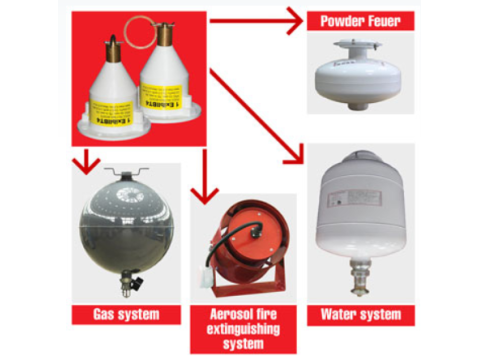What Are Primary Fire Extinguishing Tools?
Primary fire extinguishing tools are designed to combat fires at their earliest stages, where flames are still localized and manageable. If the fire spreads, these tools become less effective and may even worsen the situation. Early detection and response are critical, often aided by automated fire alarm systems that reduce reaction time.
Types of Primary Fire Extinguishing Tools
1. Firefighting Equipment
Includes tools like axes, shovels, fire hooks, buckets, and containers for water or sand. These items are typically stored on fire safety panels and are essential for both dismantling burning objects and delivering extinguishing agents to the fire.
2. Extinguishing Agents
Common materials include:
- Water: Cools surfaces and generates steam to block oxygen. Not suitable for electrical or oil fires.
- Sand and Soil: Block oxygen and can be used on electrical fires.
- Baking Soda and Salt: Effective for small fires, especially kitchen grease fires.
- Fire Blankets: Made of fire-resistant materials like asbestos or wool, these smother flames by cutting off oxygen.
3. Fire Extinguishers
Fire extinguishers are categorized by:
- Mobility: Handheld, stationary, portable, or industrial.
- Activation Method: Manual, automatic, or hybrid.
- Extinguishing Agent: Water, foam, carbon dioxide, or dry powder.
Types of Fire Extinguishers
- Water-Based Extinguishers: Suitable for solid combustibles like wood or paper but not for electrical fires or oils.
- Foam Extinguishers: Effective for liquid and gas fires.
- Carbon Dioxide Extinguishers: Safe for electrical equipment up to 10 kV, displacing oxygen to smother flames.
- Powder Extinguishers: Universally applicable, capable of handling most fire types, including electrical and chemical fires.
Fire Hoses
Fire hoses are integral to fire suppression systems in buildings. Connected to a fire hydrant, they deliver high-pressure water to the fire zone. Fire hoses are installed in compliance with safety codes and should be maintained regularly, including semi-annual unrolling and re-rolling.
Rules for Using Primary Fire Extinguishing Tools
Initial Steps:
- Break the seal, remove the safety pin, and press the lever to release the agent.
- Stand upwind to avoid exposure to smoke and heat.
Target the Base: Aim the extinguishing agent at the base of the flames, not at the top.
Use Fire Blankets Properly: When extinguishing a person’s clothing, never cover their head to prevent suffocation.
Fire Hose Operation: Attach the hose, unwind it, and open the water valve. In larger systems, a second person may be needed for efficiency.
Placement and Maintenance
Primary fire extinguishing tools should be strategically located according to fire safety plans and clearly marked on evacuation maps. Regular inspections and maintenance, including recharging extinguishers and checking seals, are critical for ensuring readiness.
Summary
Primary fire extinguishing tools are essential for containing fires in their initial stages, preventing escalation until professional firefighters arrive. Proper training, placement, and maintenance of these tools significantly enhance fire safety in residential, commercial, and industrial settings.

